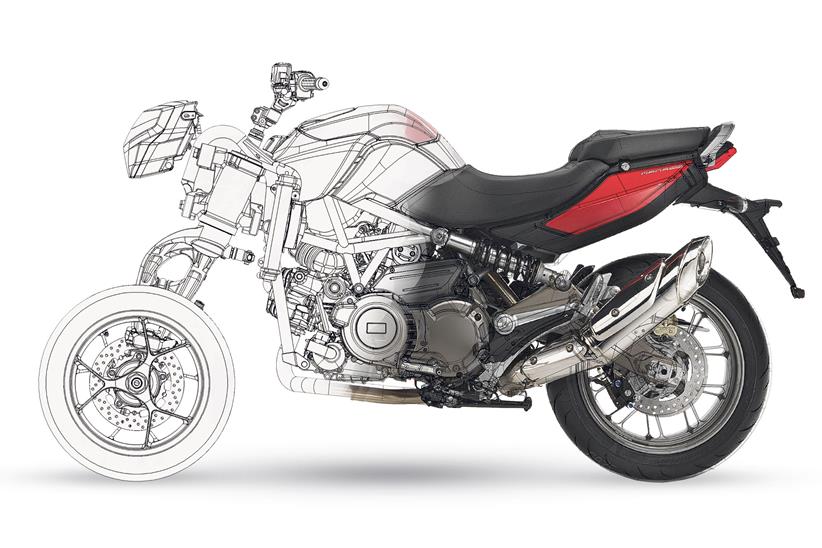Big-bore Niken rival under development by Aprilia

Yamaha have been out to make the leaning three-wheeler market their own – developing the Tricity scooter range and the MT-09-based Niken – but Piaggio first popularised the idea and now want their own big-bore trike.
This patent shows that an Aprilia Mana has been the testbed for a new tilting front suspension. Although never a big seller in two-wheeled form, and recently dropped from the line-up, the 839cc Mana’s twist-and-go transmission seems a natural bedfellow for the design, making for a large trike that’s as easy to ride as a scooter and with the added stability and front-end grip offered by a third wheel.
Related articles on MCN
The design clearly has its roots in the system developed for the MP3, but it’s evolved to cope with the stresses coming from a heavier, faster bike, as well as adding more control over the steering and suspension geometry.
Like the Piaggio MP3 – and Yamaha Tricity 300 and Niken – the system is based on two parallel upper links that run the full width, one above the other. They pivot at the centre as the Aprilia leans, and there’s a steering head mounted on either end. The parallel links mean the steering heads tilt along with the vehicle.
![]()
The parts under these dual steering heads differ from both the MP3 and Yamaha setups, though. The MP3’s front suspension relies on leading links with a coil-over shock, while the Niken has a pair of telescopic forks on each side. The new design instead has a curved cast-aluminium strut on each side, with four lateral links at the bottom connected to a suspension upright – like the wishbone on many cars.
The patent states that the system is better than both the MP3 and Niken. It’s said to be ‘substantially’ cheaper than telescopic forks, as used by Yamaha, while creating less friction – resulting in reduced wear and less maintenance.
What’s more, the wishbone-style setup creates much greater freedom for adapting the suspension geometry, allowing the wheels’ camber (their angle from vertical) to be changed as the suspension compresses during braking, which can give advantages for grip.
Each side has a coil-over shock, shown in some of the drawings as a high-performance, remote-reservoir design, mounted between the four suspension links and connected to the curved upright at the top.
It’s clear from the detail that this is much more than a vague idea. The illustrations show components that are at least ready to be put onto full-size prototypes. While the Mana has been discontinued, it’s not impossible that Aprilia could revive its twist-and-go 839cc V-twin
⏱️ Spend #60secondswith @Mufga and the Yamaha Tricity 300. Find the full video review here: https://t.co/IdkDM6LeQj pic.twitter.com/qgq8WbSqfN
— Motor Cycle News (@MCNnews) August 9, 2020
Aprilia three-wheeler in detail:
- Bike parts Just as the Niken takes its rear end and running gear from the MT-09, Aprilia’s design uses Mana parts from the headstock back.
- Design Intricate cast aluminium uprights connect the two 15in front wheels to a pair of steering heads on the parallelogram tilting linkage.
- Keeping it slim Where the Niken’s forks run outside the front wheels, the Aprilia’s uprights are between them, keeping things narrow.
- Option three The third style has the shocks higher and hides them inside the uprights to protect them from dirt and debris thrown up from the road.
- Design options Two variants offer different geometry for the shock linkages, with one offering greater adjustability.
- Shocks not forks Coil-over shocks are used for each front wheel, giving less friction than the telescopic forks on the Niken.

